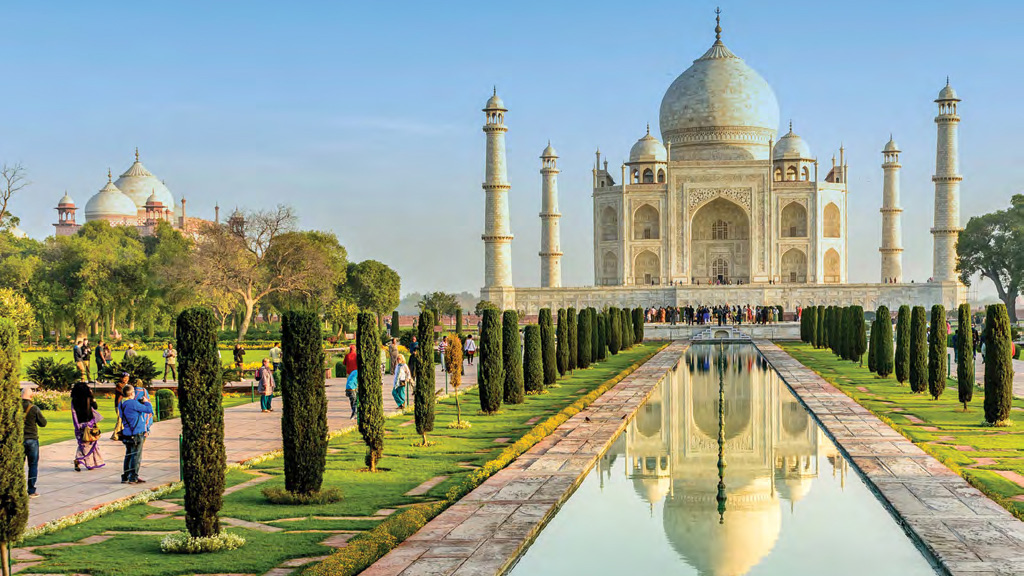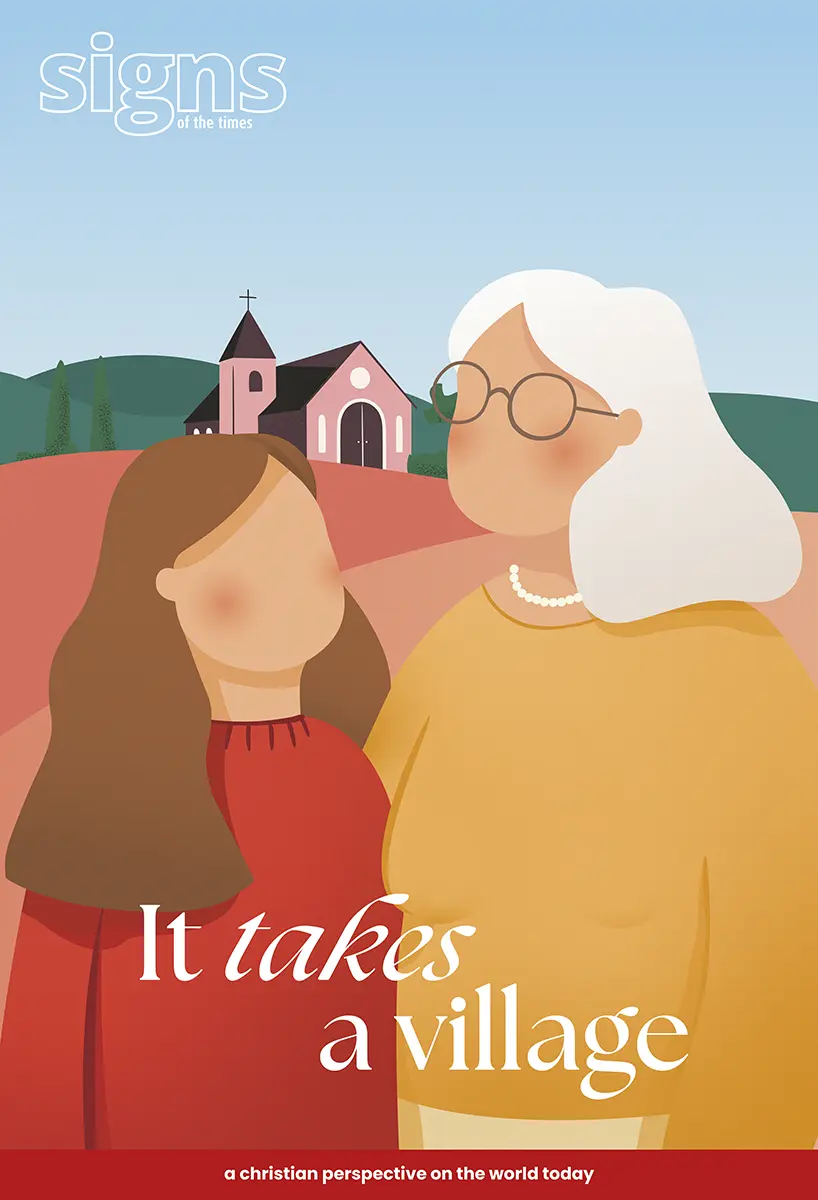Jesus’ Birth Reverses Your Death
December 1, 2016

The Taj Mahal is, in my humble opinion, one of the few tourist attractions on this planet that actually lives up to its reputation.
I can’t tell you how often I’ve gone to see some well-known destination, only to be greatly disappointed by the divergence between the spectacular photos in the travel brochure and the somewhat downgraded reality of the place. But the Taj Mahal is different. It’s easily one of the most stunning structures on the planet.
The marble sepulchre was built in the seventeenth century by Shah Jahan, the Mughal emperor, as a memorial to his third wife, Mumtaz Mahal. She died giving birth to their forteenth child and as the story goes, the emperor was so grief-stricken that he considered suicide. Rather than take his own life, however, he decided to build a spectacular tomb for the woman he loved. It is perhaps the world’s most spectacular monument to grief.
What I find most interesting is not the tomb itself but the garden immediately in front of it. If you’ve ever seen a picture of the Taj Mahal, you’ve seen the garden—or at least part of it. Most photographers stand at the far end of the garden in order to catch a reflection of the tomb in the pools that stretch across the grounds.
The garden is roughly square and there’s a pool at its centre from which four walkways and canals run to the edges of the garden, dividing it into four smaller squares.
The design of the garden is based on some very old ideas, borrowed from the ancient Persians, who, rather prosaically, called it a “walled enclosure.”
In Persian, the term used to name such a garden is a compound word, which the Persians borrowed from the Medes. The two words that form the compound are pairi, which means “around” and daeza, which means “wall.” The garden is literally an “around wall” or pairidaeza. From that compound we get the word paradise. The basic design of the Taj Mahal garden, then, is a “paradise garden.”
This design deliberately harks back to the biblical story of the Garden of Eden. The garden pictured in Genesis was a paradise from which four rivers flowed and in the midst of which stood the tree of life. When Adam and Eve sinned and became subject to death, they were escorted out of the garden to live the rest of their lives in hardship. Two cherubim were stationed at the gates of the garden “to guard the way to the tree of life” (Genesis 3:24*). The reason was simple: Sinful human beings could not be permitted to live forever, for there was no telling what depths of depravity and suffering they might be capable of, given unlimited time.
The Promise
In sinning, the human race drove a sharp wedge between themselves and their life-giving Creator; because of this, they would die. But they would not die without hope. Before escorting Adam and Eve out of the garden to experience the miserable world they’d made for themselves, God gave them a promise: the Seed (the Descendant) of the woman would come to pay for their sins and reverse their fortunes (verse 15). This was the first Messianic promise, a prophecy of the God-Man who would come to save the human race. The promise meant that the expulsion of human beings from the garden wasn’t permanent. The angels weren’t primarily barring the way to the tree of life; they were guarding the tree. Eventually, the path would be reopened and the human race would be readmitted to paradise. Death would be reversed. In fact, the Bible ends on that very note: “He showed me a pure river of water of life, clear as crystal, proceeding from the throne of God and of the Lamb. In the middle of its street, and on either side of the river, was the tree of life, which bore twelve fruits, each tree yielding its fruit every month. The leaves of the tree were for the healing of the nations” (Revelation 22:1, 2).
The layout of the paradise garden at the Taj Mahal—and other paradise gardens like it—was meant to serve as a tangible reminder of
God’s promise that death need not be forever. God made the promise just outside the edge of the garden, where Adam and Eve would die. Just outside the perimeter of the paradise garden at the Taj Mahal is another painful monument to suffering and death. But it sits adjacent to paradise, so it becomes a symbol of hope—hope that access to the garden has not been cut off forever.
But why go through the trouble of constructing an elaborate memorial if there is no hope? Why resist? Why not simply admit defeat and get on with life? We resist death because we are profoundly hardwired to do so. We are born with—and live with— an instinct that tells us we’re being cheated by death, that there’s something wrong with the current order of things.
Even if you happen to believe that the Garden of Eden is a myth (which I do not), you still have to ask yourself why ancient people would go to such trouble to explain suffering and death. Why bother constructing a story to explain why we die? Wouldn’t it be simpler to just admit that we die and that’s it?
Except, we don’t just admit our death. We have a profound need to understand why we die. We demand to know why our existence, in the words of Thomas Hobbes, is “nasty, brutish and short.” We struggle with a deep sense of having been cheated, a sense that something is terribly wrong.
Even if Eden were a myth, we would have to ask ourselves why we need such a myth.
Lost and found
Death is not a friend. It’s an intruder whose cruel presence demands an explanation. Jesus, the God-Man who came to save the human race 2000 years ago, the same God-Man whose birth the Christian world celebrates during Christmas, looked into the darkness of death and He trembled. According to the Christian understanding, He wasn’t facing merely His own death. He was facing yours as well. He was your Substitute, giving His life as a ransom for many (Matthew 20:28), becoming sin for you (2 Corinthians 5:21) and thus receiving your death, the wages of your sin (Romans 6:23; Isaiah 53:4, 5; 1 Peter 3:18). No wonder He trembled!
It is telling that when Jesus neared the time of His death, He felt Himself so completely separated from the presence of God that He begged, “Let this cup pass from Me” and He cried out, “My God, My God, why have You forsaken Me?” (Matthew 26:39; 27:46). You can’t go on living indefinitely apart from God. Without His atoning sacrifice, the human race is lost. Forever.
If we dismiss the idea that death actually means a total cessation of life, we effectively diminish the seriousness of sin. The Bible teaches that the “wages of sin is death,” not a conscious existence in some other realm. We don’t merely cross an invisible barrier into the spirit world. We actually cease to exist. We’re lost to God’s universe.
And because Jesus knew that, He chose to come to earth and be born as a human in order to give His life to make sure that we could be reunited with our Creator. His death was absolutely real so that our eternal lives can be absolutely real too.
Jesus faced death for what it truly is: our enemy (1 Corinthians 15:26). It is not a part of God’s design. Jesus died for us “while we were still sinners” (Romans 5:8). He was crucified to “bear the sins of many” (Hebrews 9:28). Through His death, Jesus has “redeemed us to God by [His] blood” (Revelation 5:9). In short, our sin problem has been solved. We’ve been reconciled to God through Jesus’ sacrifice.
While the date of Jesus’ birth isn’t known, you can be certain that He was really born, He really walked the earth as a Man, He really died and He really lives. And there is no need to be perplexed about what your future holds. You will—if Jesus doesn’t return before the moment comes—really die. And then you will really live.









